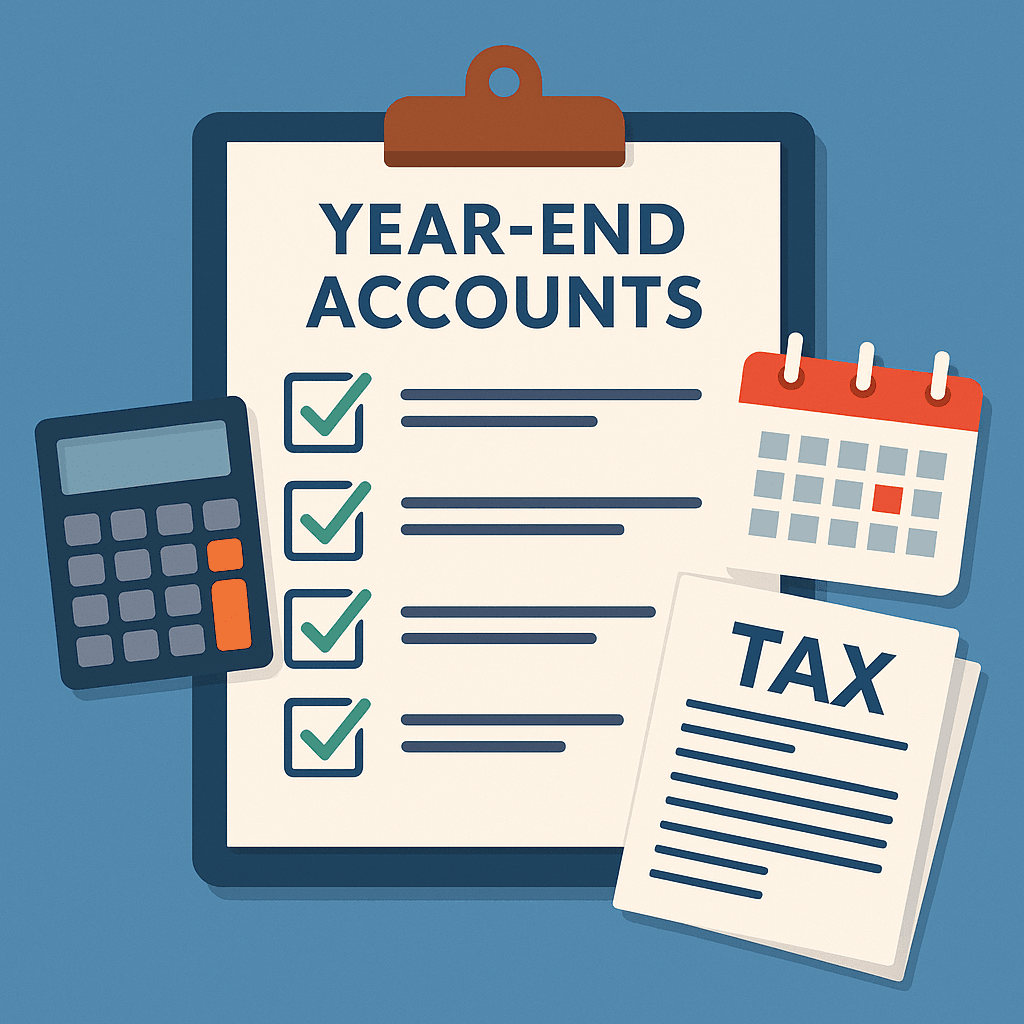Preparing and filing annual accounts might seem daunting, but for UK sole traders it’s a straightforward process once you know the steps. This guide will walk you through everything from understanding the key components to submitting your figures to HMRC, so you can stay compliant and focus on growing your business.
1. What Are Annual Accounts?
Annual accounts are the financial statements that summarise your business’s income and expenditure over your accounting period (usually 12 months). As a sole trader, you’ll prepare these to:
- Calculate your taxable profit for Self-Assessment
- Monitor the health of your business
- Provide evidence if you ever seek finance or insurance
Your annual accounts consist of two main parts:
- Profit & Loss (P&L) Account
Shows all business income and allowable expenses to arrive at your net profit (or loss). - Balance Sheet (Statement of Financial Position)
Captures your business assets (e.g. equipment), liabilities (e.g. loans) and capital at the period end.
2. Key Deadlines
| Task | Deadline |
|---|---|
| End of accounting period | Variable (e.g. 31 March) |
| Submit Self-Assessment tax return | 31 January following period end |
| Pay Income Tax & National Insurance | 31 January (balancing payment) |
| Second payment on account (if due) | 31 July following period end |
Tip: If your accounting period doesn’t align with the tax year, your deadlines still plug into the Self-Assessment timetable above.
3. Keeping Records Throughout the Year
A stress-free year-end starts from day one. Be sure to:
- Record every sale and purchase: Use a simple spreadsheet or accounting software.
- Keep receipts and invoices: HMRC requires originals or digital copies.
- Track mileage if you use a vehicle for business: either with a logbook or the flat-rate method.
- Reconcile your bank monthly: Ensures no duplicate or missing transactions.
4. Step-by-Step Preparation
Step 1: Confirm Your Accounting Period
Decide your year-end (e.g. 31 March)—once set, HMRC will expect consistency unless you request a change.
Step 2: Collate Your Records
Gather:
- Bank statements
- Sales invoices & credit notes
- Purchase invoices & expense receipts
- Mileage logs and motor costs
- Any relevant loan or asset schedules
Step 3: Prepare the Profit & Loss Account
- Total your income: All business sales, fees, commissions.
- List your expenses: Office costs, travel, stock, professional fees, insurance, capital allowances on plant & machinery.
- Calculate net profit: Income minus expenses.
Step 4: Prepare the Balance Sheet
- Assets: Cash, accounts receivable, equipment value (after depreciation).
- Liabilities: Overdrafts, unpaid bills, any loans.
- Capital & drawings: Owner’s investment and withdrawals.
- Check equation: Assets = Liabilities + Capital.
Step 5: Apply Adjustments
- Accruals and prepayments: Match costs to the period they truly belong in.
- Depreciation: Reflect wear and tear on non-current assets.
- Bad debts: Write off any uncollectable invoices.
5. Filing with HMRC
- Log in to your HMRC online account via GOV.UK.
- Enter your profit figure from the P&L into the Self-Assessment form.
- Confirm any adjustments (e.g. disallowable expenses).
- Review and submit—you’ll receive an immediate acknowledgment.
- Pay any tax due by 31 January (and 31 July if you have payments on account).
6. Common Pitfalls & How to Avoid Them
- Missing receipts: Back them up digitally.
- Mixing personal and business costs: Keep a separate business bank account.
- Under-estimating tax bills: Set aside a proportion of each sale (e.g. 20–30 %).
- Last-minute rush: Start compiling your figures at least two months before your deadline.
7. Tools to Streamline the Process
- Accounting software (FreeAgent, Xero, QuickBooks) for automated bank feeds and P&L reports.
- Receipt-scanning apps (Dext, Receipt Bank) to digitise paperwork instantly.
- Mileage trackers (TripLog, MileIQ) for accurate travel claims.
8. Next Steps After Filing
- Review your performance: Use your P&L to spot cost trends and profit opportunities.
- Plan cash flow: Update your forecasts based on actual results.
- Consider growth: With your accounts in hand, you’re ready to approach lenders or investors confidently.
Conclusion
Annual accounts needn’t be a headache. By maintaining clear records, following a structured preparation routine, and leveraging the right tools, you’ll demystify the whole process—and gain valuable insights into your sole trader business’s financial health. Start early, stay organised, and file on time to keep HMRC happy and your business on track.




